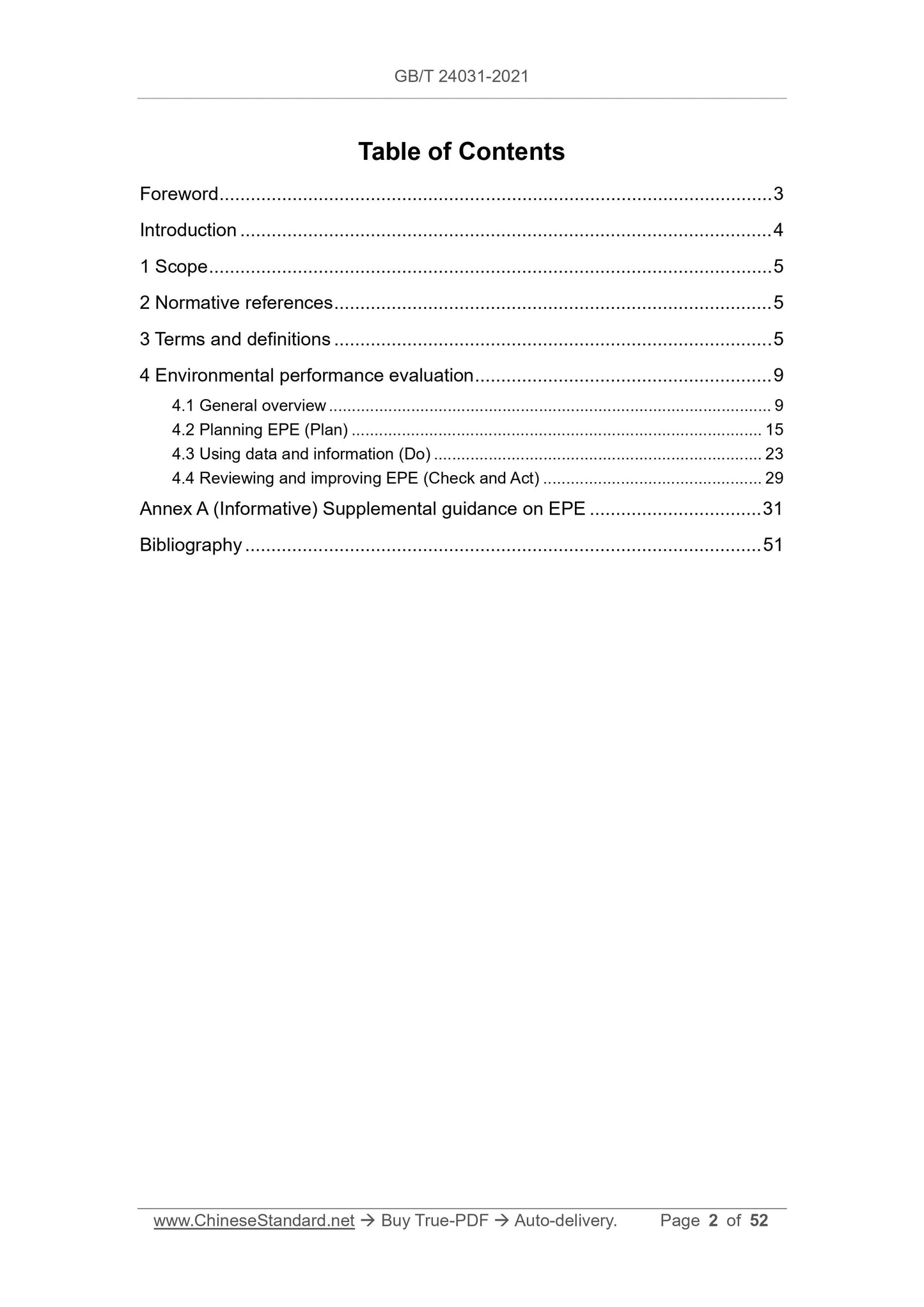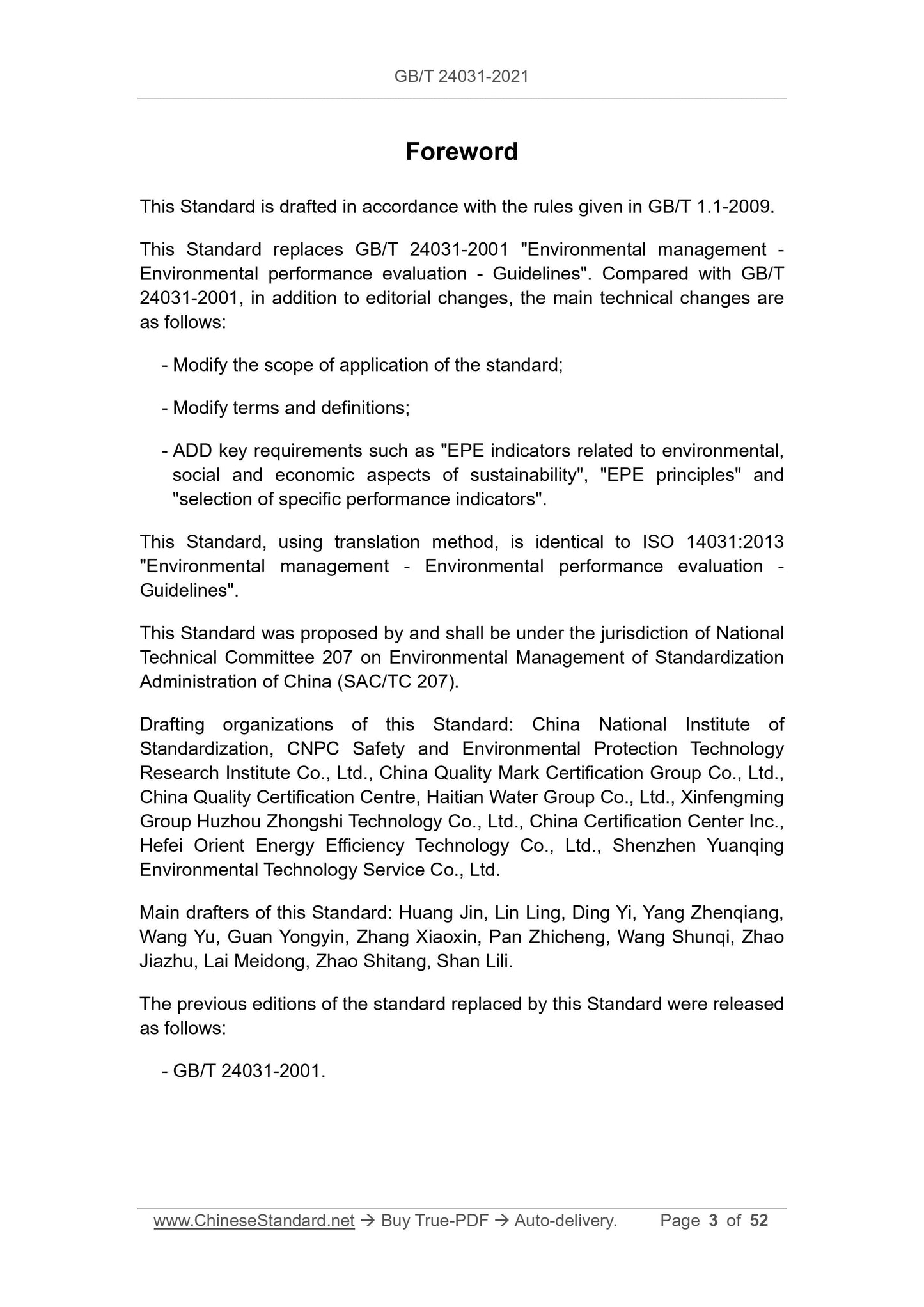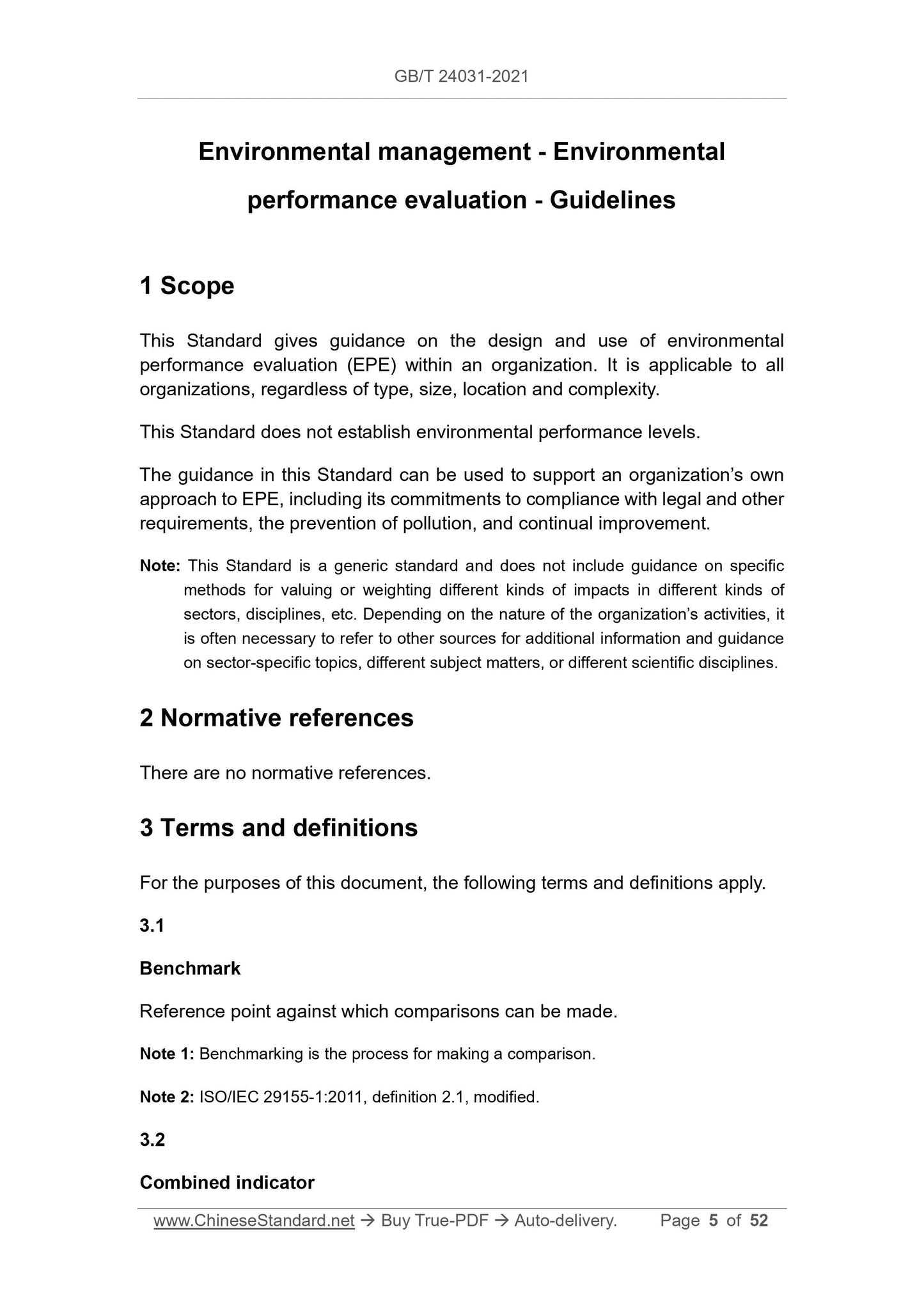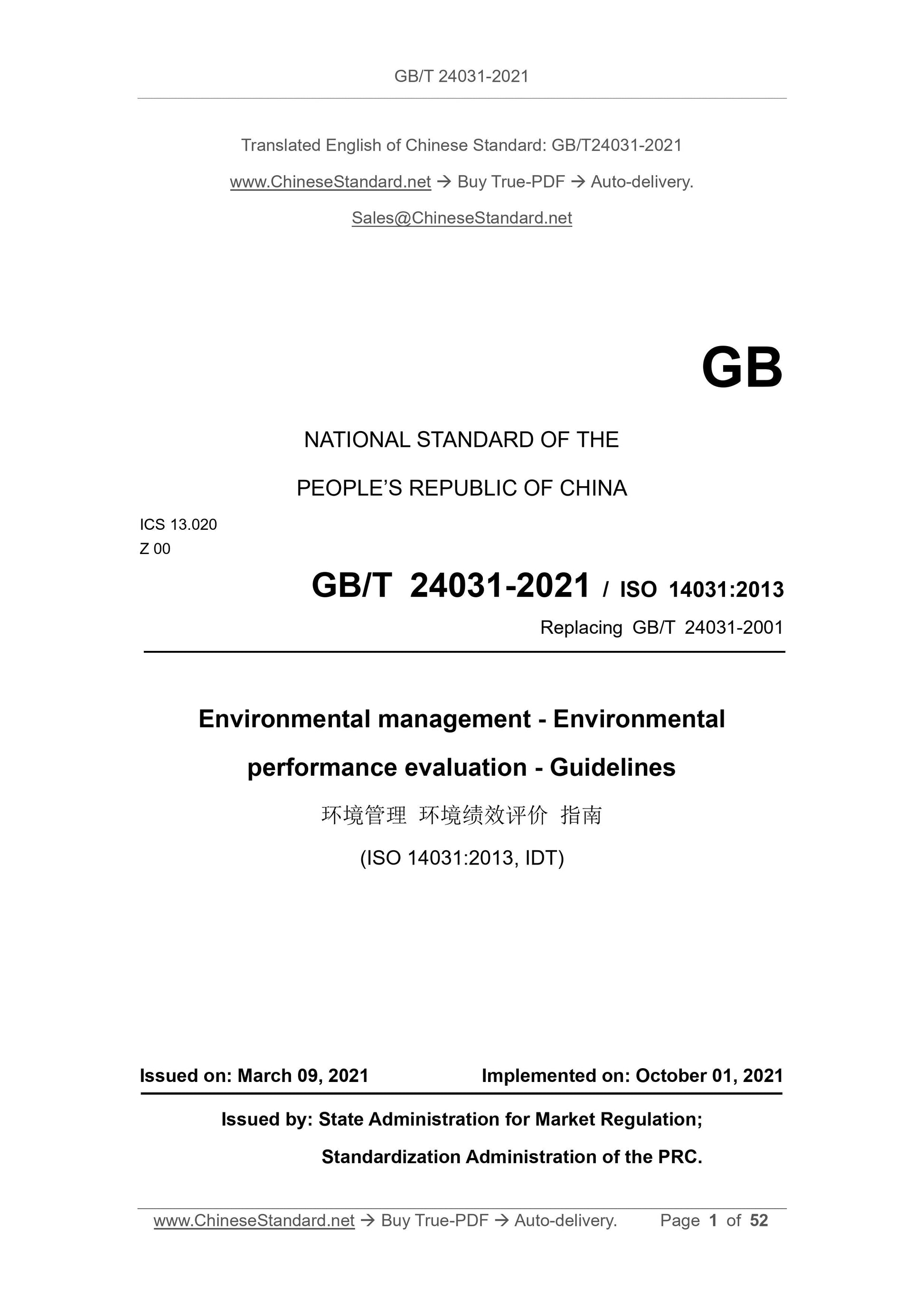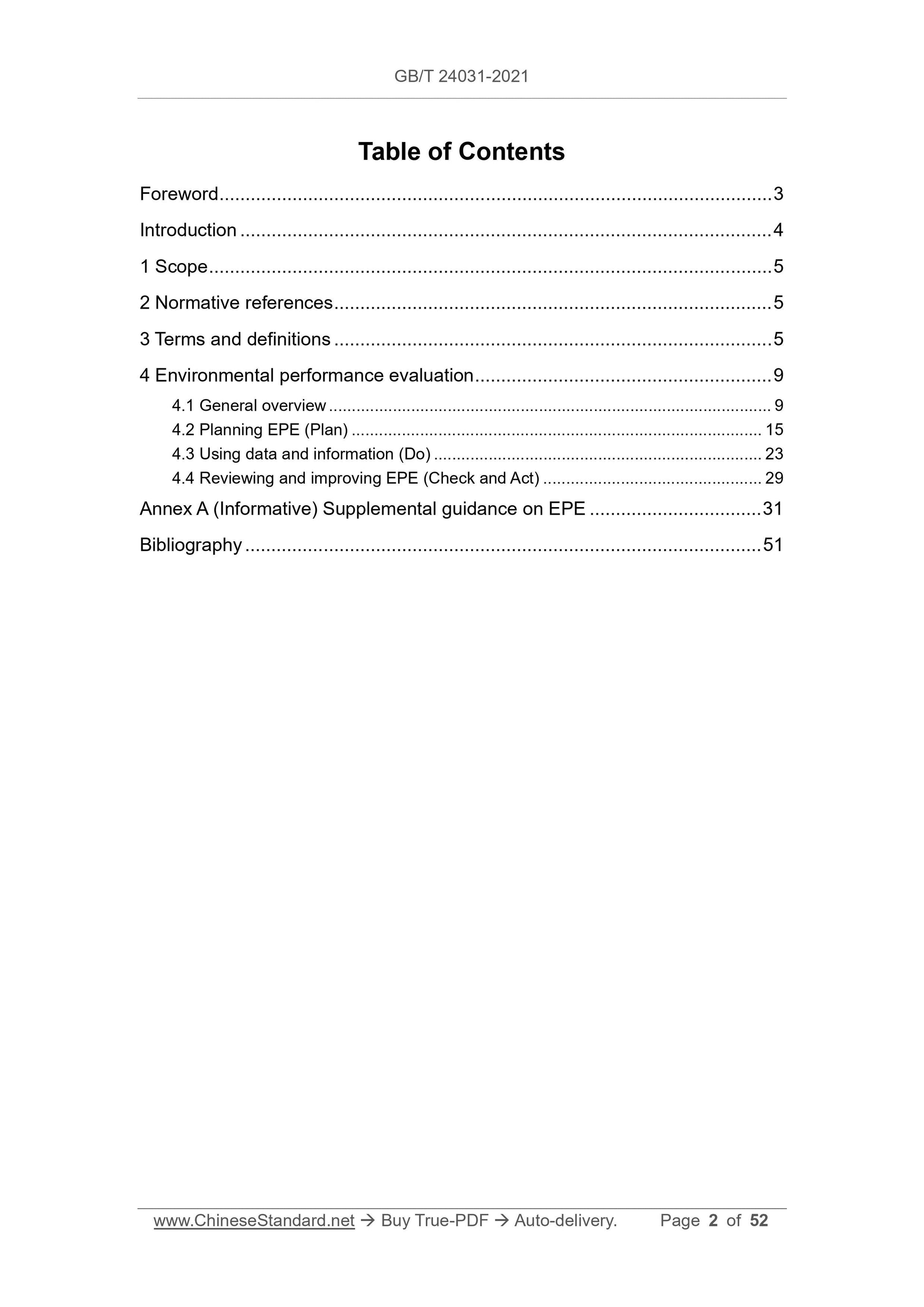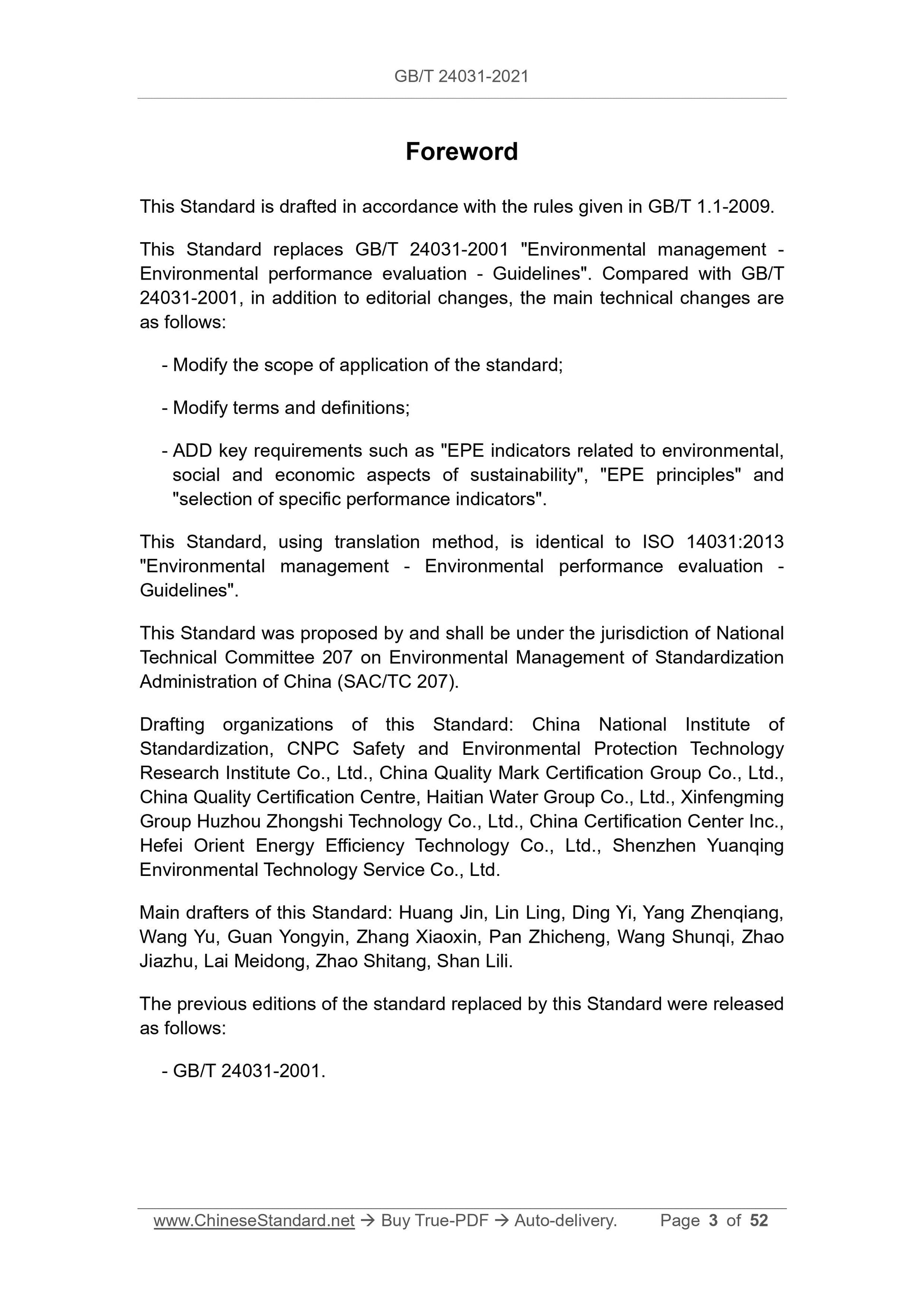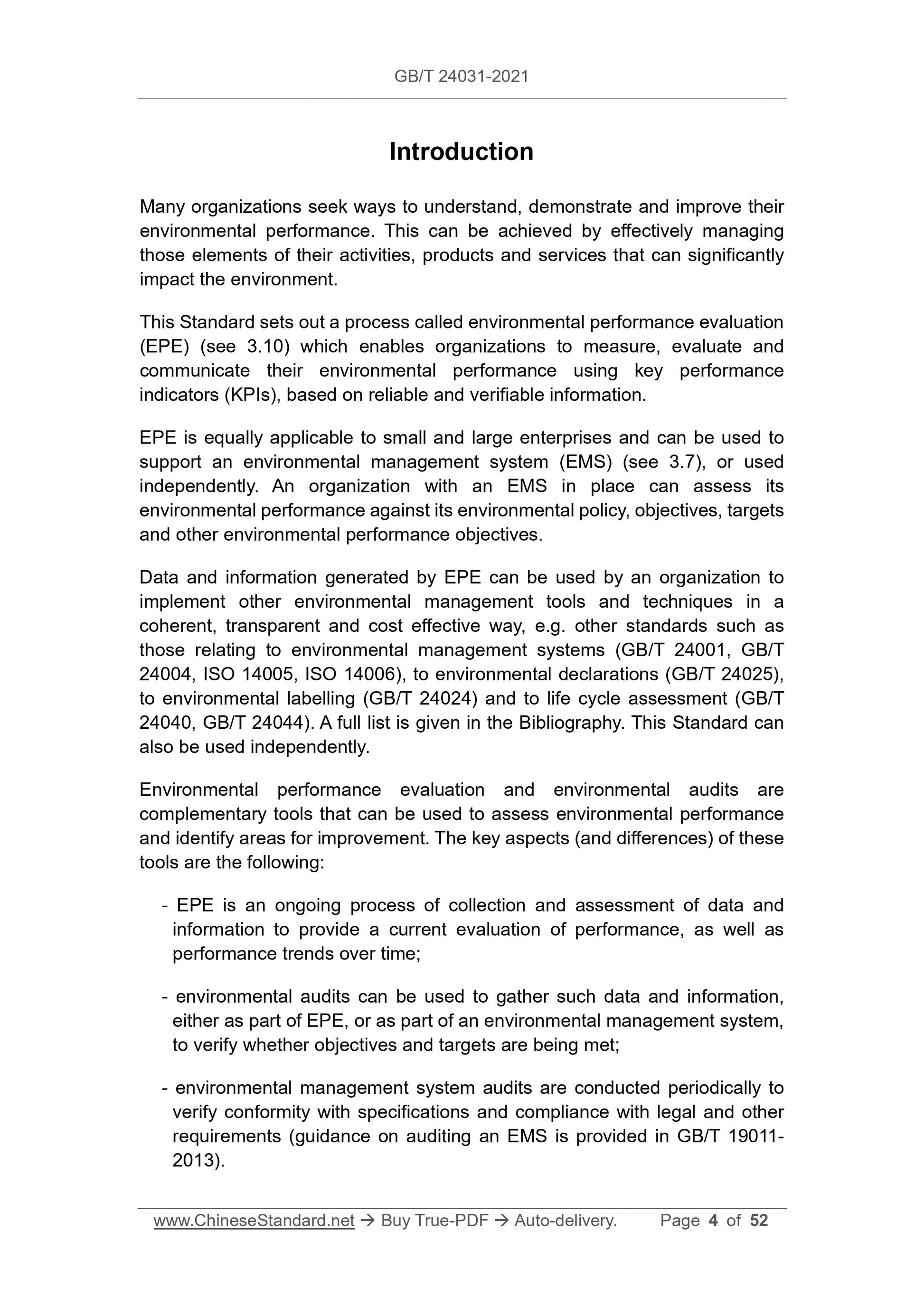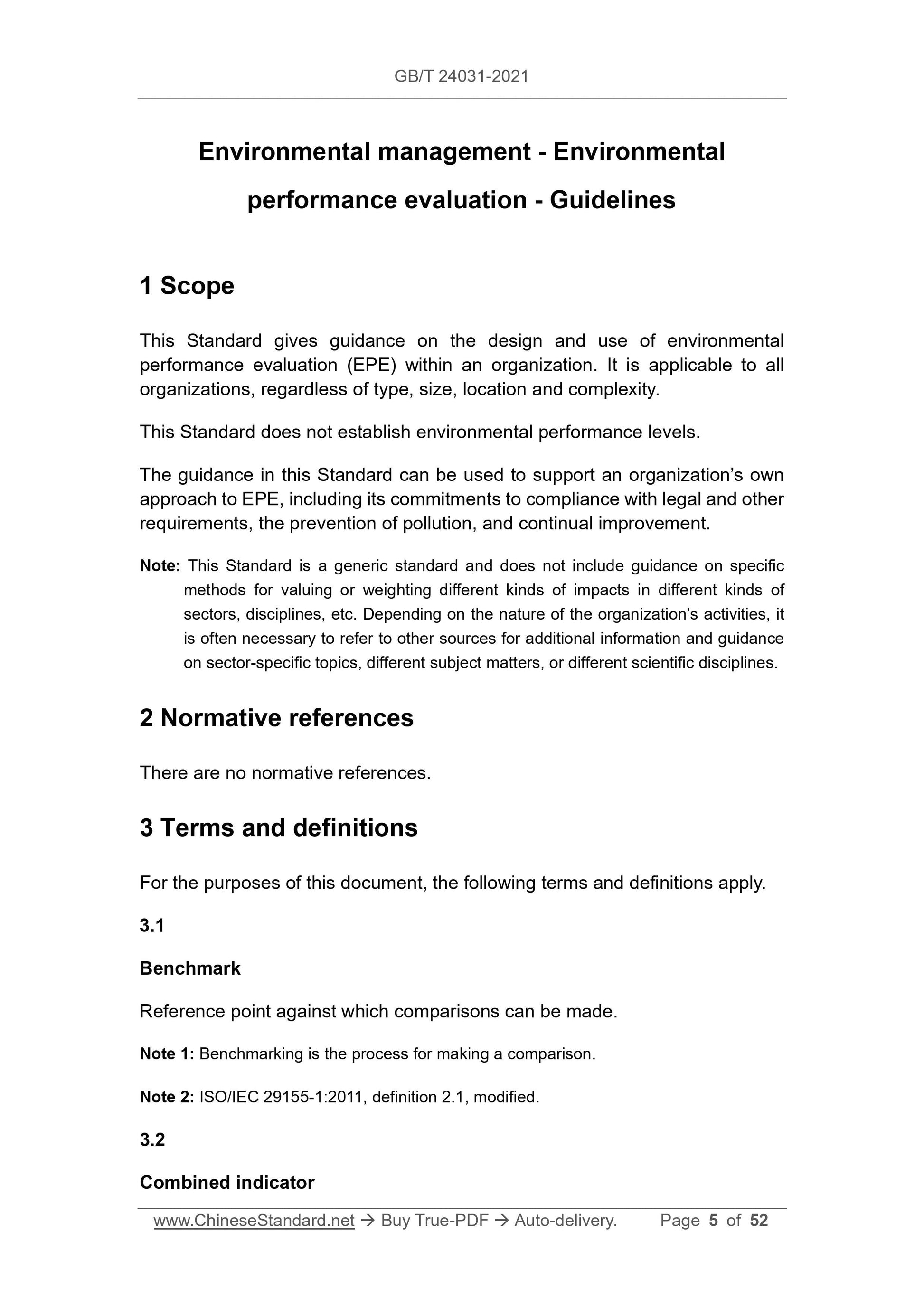1
/
of
5
www.ChineseStandard.us -- Field Test Asia Pte. Ltd.
GB/T 24031-2021 English PDF (GB/T24031-2021)
GB/T 24031-2021 English PDF (GB/T24031-2021)
Regular price
$560.00
Regular price
Sale price
$560.00
Unit price
/
per
Shipping calculated at checkout.
Couldn't load pickup availability
GB/T 24031-2021: Environmental management - Environmental performance evaluation - Guidelines
Delivery: 9 seconds. Download (and Email) true-PDF + Invoice.Get Quotation: Click GB/T 24031-2021 (Self-service in 1-minute)
Newer / historical versions: GB/T 24031-2021
Preview True-PDF
Scope
This Standard gives guidance on the design and use of environmentalperformance evaluation (EPE) within an organization. It is applicable to all
organizations, regardless of type, size, location and complexity.
This Standard does not establish environmental performance levels.
The guidance in this Standard can be used to support an organization’s own
approach to EPE, including its commitments to compliance with legal and other
requirements, the prevention of pollution, and continual improvement.
Note: This Standard is a generic standard and does not include guidance on specific
methods for valuing or weighting different kinds of impacts in different kinds of
sectors, disciplines, etc. Depending on the nature of the organization’s activities, it
is often necessary to refer to other sources for additional information and guidance
on sector-specific topics, different subject matters, or different scientific disciplines.
Basic Data
| Standard ID | GB/T 24031-2021 (GB/T24031-2021) |
| Description (Translated English) | Environmental management - Environmental performance evaluation - Guidelines |
| Sector / Industry | National Standard (Recommended) |
| Classification of Chinese Standard | Z00 |
| Word Count Estimation | 34,342 |
| Issuing agency(ies) | State Administration for Market Regulation, China National Standardization Administration |
Share

